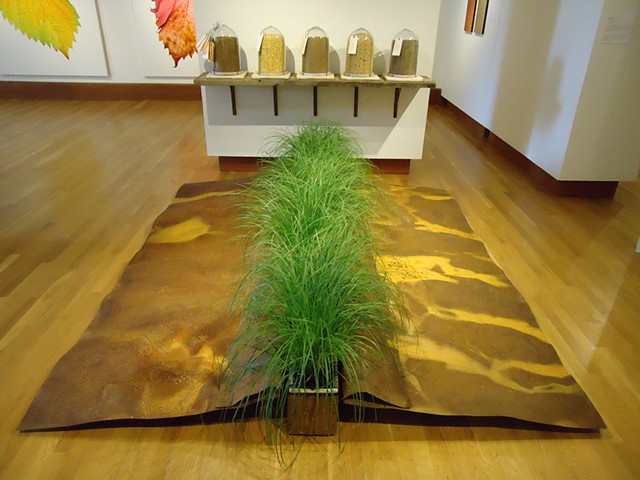More 2011-2015
This piece is about the loss of native wetland plant species and habitat that have been replaced by monocultures of non-native plants.
The rusty steel represents land. These particular pieces of steel were used in an unrelated ecological restoration project where invasive buckthorn was cut and burned in brush piles. The site also contained remnant native plants and the steel was used as a platform on which to burn the brush, thereby minimizing heat damage to the soil.
The live plants are of brown fox sedge, Carex vulpinoidae, a once-common wetland species native to Illinois and elsewhere.
The corn and soybeans represent vast agricultural fields where drain tiles have dried out the wetland areas to make room for crops. The Kentucky bluegrass seed represents our lawns that have displaced many rich wetlands. The seed of reed canary grass, an invasive species, is available for purchase despite its tendency to out-compete most varieties of native wetland plants. The native wetland seed mix contains dozens of species of flowers, grasses, sedges and rushes that have been displaced by the non-native plants.
